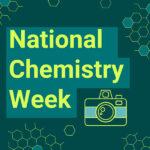
Sharing ideas and inspiration for engagement, inclusion, and excellence in STEM

Environmental Sampling and Instrumentation is an innovative science course offered at Northern New Mexico College that is helping students develop career-readiness skills through the use of Vernier technology. The class has also been the catalyst for a unique collaboration with the Pueblo of Santa Clara, a federally recognized tribe.
In Environmental Sampling and Instrumentation (which was first offered in fall 2019, went on hiatus during the pandemic, and is slated to be offered again next fall), students conduct water testing on the Rio Grande and test nearby air and soil samples.
Wes Colgan III, PhD, the instructor of the course, uses an array of Vernier technology to teach his students fundamental standards of environmental monitoring, such as the application and use of basic sampling tools.
Colgan also provides his students with opportunities to employ scientific principles, such as obtaining a representative sample.
At the end of the course, students must demonstrate the major types of data analysis techniques, basic types of field-sampling techniques, chain of custody, quality assurance and quality control, and the common analytical chemistry tools used in the lab for environmental science.

Developing the Future Workforce
The skills that students develop in Environmental Sampling and Instrumentation prepare them for future science classes—and future careers.
“These students are collecting and analyzing the same kinds of data they’d be encountering in a professional lab, water treatment plant, or other scientific setting,” Colgan said. “My goal is to get students to build good habits because those habits, as well as the quality control and quality assurance that go along with the environmental sample collection, are simply invaluable.”
He also said some of the students who have taken the course have gone on to work at the New Mexico Forestry Division and Los Alamos National Laboratory.
“This course provides students with a strong background for graduate school and to compete for environmental science jobs,” Colgan said. “Plus, students gain job-ready skills, and the techniques they develop translate well to the analytical laboratory tools they will use in the real world.”
Collaborating with Communities to Support Science Learning
Northern New Mexico College primarily serves Hispanic and American Indian students who live in rural communities within 40 miles of the college’s main campus in Española. This area includes eight Native American communities, and it is one of the most underserved regions in New Mexico.
The Pueblo of Santa Clara, whose tribal office is near Northern New Mexico College, provided critical buy-in for the Environmental Sampling and Instrumentation course. Colgan said that it was only through a collaboration with the tribe that students could conduct water testing on the Rio Grande.

“We were granted permission from the Department of Forestry of the Pueblo of Santa Clara to collect water samples and conduct a site evaluation on their property,” he said. “We absolutely could not have done it without the support of the Pueblo of Santa Clara.”
Colgan said this collaboration was instrumental in fostering place-based learning, which gave his class a different perspective on the Rio Grande and has paved the way for future opportunities for students to work with the Pueblo of Santa Clara.
“We were essentially able to take a lab with us into the field and measure turbidity and flow velocity and really make the students think about the river—they cross over the bridge six times every day and don’t think about the physics and the chemistry and the biology that’s happening right there in this incredibly vital resource,” Colgan said. “We were also able to dig in and address some real questions that impact the local community and the Pueblo of Santa Clara.”
Incorporating the Elements into Place-Based Learning
For the first half of the course, which focuses on testing water from the Rio Grande, students use LabQuest® 2 as their primary data-collection technology. They use the Go Direct® SpectroVis® Plus Spectrophotometer to test the river water for orthophosphates, and they also use the following probeware:

The second half of the course involves testing air and soil samples. For this work, students use the Vernier Mini GC™ Plus to identify unknown organic chemicals. In addition, they use the fluorescence capabilities of the Go Direct SpectroVis Plus Spectrophotometer to characterize unknown compounds.
“The Vernier technology helps to really round out the students’ experience,” Colgan said. “And whenever you can put something in the students’ hands to get them engaged and make them feel like they’re gaining a real-world skill, it’s a tremendous benefit for engagement.”
Share this Article

Sign up for our newsletter
Stay in the loop! Beyond Measure delivers monthly updates on the latest news, ideas, and STEM resources from Vernier.






